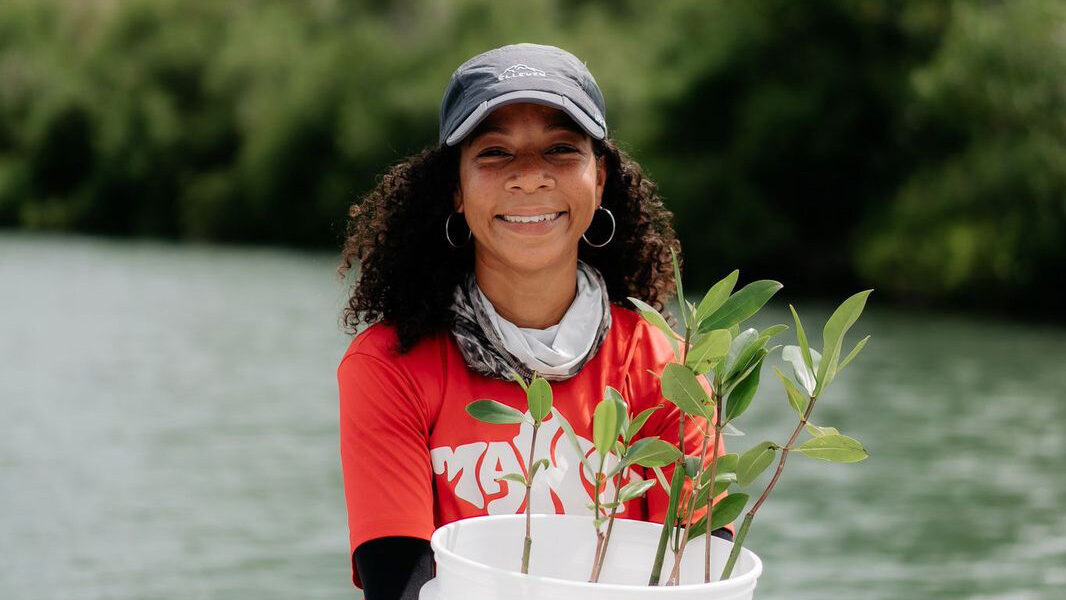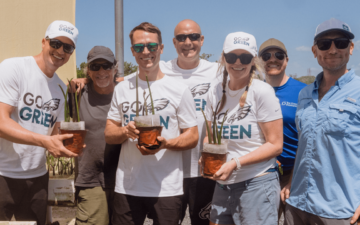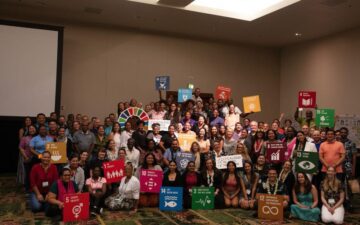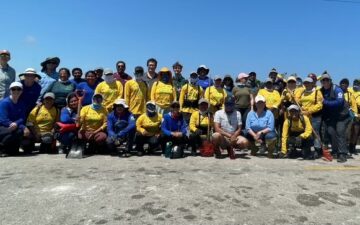How a community in Vieques, Puerto Rico is thriving less than three years after experiencing the worst storm in 89 years
In September 2017, the world watched as island communities throughout the Caribbean braced for not one, but two Category 5 hurricanes; their paths barreling through the Caribbean Sea in a two-week span.
Hurricane Irma came first, followed by Hurricane Maria. Both devastated the northeastern Caribbean — particularly Dominica, Saint Croix and Puerto Rico. Maria is regarded today as the worst natural disaster in recorded history to affect those islands. Vieques, Puerto Rico went EIGHT MONTHS without any form of reliable, persistent power. To put it in perspective, power was restored to at least 95% of customers within 13 days of Superstorm Sandy in New York and within one week after Hurricane Harvey in Texas. Viequenses went two thirds of a year without the ability to reliably heat their stoves, light their homes or power electronic equipment of any kind. Most of us today wouldn’t know how to handle a dead iPhone battery, let alone ensure meals and medicine were in our reach. As the community sought to rebuild, a magnitude 6.4 earthquake struck Puerto Rico in January 2020. And in March, the world began to grapple with a global pandemic.
With all that has affected the island of Vieques over the past few years, you might think the spirit of the community would be broken. Yet, in our experience, it has only strengthened. It is here amongst the wild horses, grazing sea turtles and beaming bright orange sunsets we find a community of dynamic leaders, building generations of future conservationists.
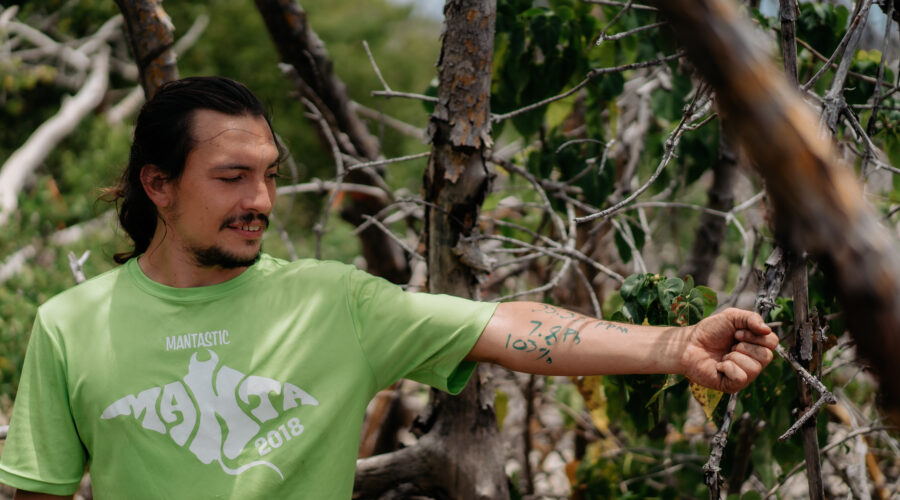
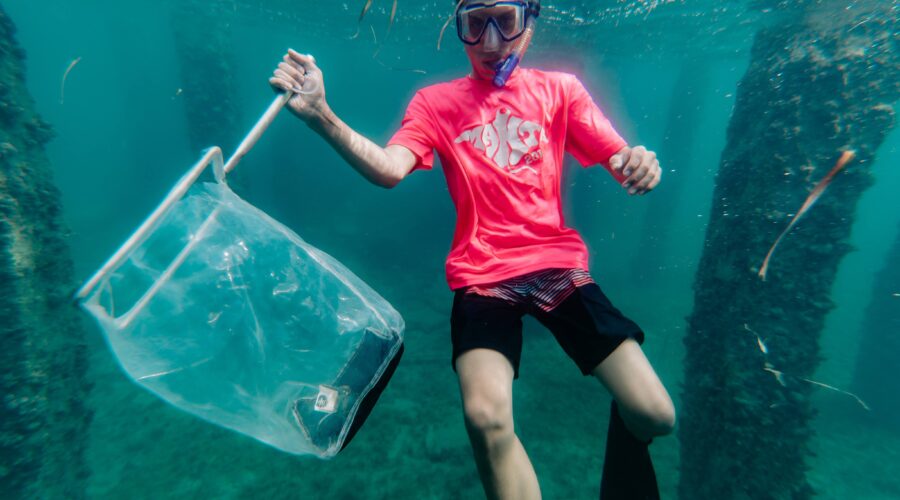
In many ways, we shouldn’t be surprised. Viequenses are survivors — over 60 years of military maneuvers and artillery testing, frequent hurricanes, extended periods of little or no rain, deficient transportation and no hospital or adequate health facilities have been the norm. And while Vieques is one of the poorest and least-invested-in areas of Puerto Rico, it also has some of the most beautiful beaches in the Caribbean, extensive seagrass beds, mangrove forests and endangered flora and fauna. It is also home to Bahía Bioluminiscente — the brightest bioluminescent bay in the world, and to some the eighth wonder of the world.
Vieques is home to some of the most beautiful and resilient people in the world. People who can teach us what climate resilience really looks like, and how we can collectively act to meet our global sustainability goals, one local community at a time.
Extensive tracts of protective mangroves and seagrasses were destroyed during Hurricane Maria, leaving large areas prone to ongoing erosion. The Bay’s surrounding mangroves help protect the delicate balance that allows the organism responsible for this glorious glow — called dinoflagellates or Pyrodinium bahamense — to thrive. Erosion, mangrove degradation and a changing morphology meant these dinoflagellates could be expelled into the sea. Without intervention, the Bay was at risk of “going dark” and with it, not just a spectacular place, but an entire culture and economy that depends upon it.
While being a draw for ecotourism, the bioluminescent dinoflagellates also serve a key ecological role. They are tiny marine organisms that are a type of plankton, or organisms carried by tides and currents. As phytoplankton, dinoflagellates are the primary producers that provide large amounts of energy to establish the base of the marine food web.
For the past few years through my role at The Ocean Foundation, I’ve found myself lucky enough to be working with this community. A desert boy from Arizona, I’ve been learning the wonders only someone from an island can teach. The more we engage, the more I see how the Vieques Trust is not just a conservation organization, but the community organization responsible for serving nearly every one of the roughly 9,300 residents that live on the island in some way. If you live in Vieques, you know their staff and students well. You’ve probably donated money, goods or your time. And if you have a problem, it’s likely you call them first.
For nearly three years, The Ocean Foundation has worked on the island in response to Maria. We’ve been able to secure critical support from individual donors and key champions at JetBlue Airways, Columbia Sportswear, Rockefeller Capital Management, 11th Hour Racing and The New York Community Trust. After immediate intervention, we sought broader support for additional restoration, permitting and planning for local youth education programs in concert with our partners at the Vieques Trust. It was in that pursuit we found the unlikely good fortune of meeting WELL/BEINGS.
WELL/BEINGS formed three years ago with the mission to support people, the planet and animals. The first thing we noticed was their unique understanding of the intersectionality that should exist in philanthropy. Through this mutual goal to invest in natural tools to confront climate change — while also supporting local communities as the driving force for change — the connection to the Vieques Trust and the preservation of Mosquito Bay became obvious to us all. The key was how to execute and tell the story for others to understand.
It would have been fine enough for WELL/BEINGS to financially support the project — I’ve been in development for over a decade and that is usually the norm. But this time was different: Not only did WELL/BEINGS take an increased involvement in identifying additional ways to support our partners, but the founders decided it was worth a visit to understand local needs from the community firsthand. We all decided to film and document the incredible work the Vieques Trust is doing to preserve the Bay, to showcase a bright spot from a community with a story worth telling. Besides, there are worse things to do with your life as we emerge from a worldwide pandemic than to spend five days in one of the most beautiful places in the world.
After touring the Vieques Trust and their seemingly endless community and youth educational programs, we headed out to the Bay to see the work and the bioluminescence for ourselves. A short drive down a dirt road led us to the edge of the Bay. We arrived at a 20 foot opening and were greeted by skilled tour guides fully equipped with life jackets, headlamps and big smiles.
When you depart from the shore, it feels like you are sailing across the universe. There is hardly any light pollution and the natural sounds provide soothing melodies of life in balance. As you drape your hand into the water a powerful neon glow sends jetstream trails behind you. Fish dash by like lightning bolts and, if you’re really lucky, you see light drops of rain bounce off the water like glowing messages from above.
On the Bay, bioluminescent sparks danced like tiny fireflies beneath our crystal clear kayak as we paddled out into the dark. The faster we paddled, the brighter they danced and suddenly there were stars above and stars below — magic was running around us in every direction. The experience was a reminder of what we are working to preserve and cherish, how important each of us are in playing our respective roles and yet — just how insignificant we are compared to the power and mystery of mother nature.
Bioluminescent bays are extremely rare today. While the exact number is highly debated, it is largely accepted that there are less than a dozen in the entire world. And yet Puerto Rico is home to three of them. They weren’t always this rare; Scientific records show there used to be many more before new developments altered the landscape and surrounding ecosystems.
But in Vieques, the Bay glows bright every night and you can literally see and feel how resilient this place really is. It is here, with our partners at the Vieques Conservation and Historical Trust, that we were reminded it will only stay that way if we take collective action to protect it.
